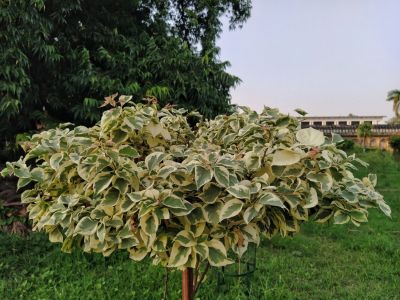Giant Dogwood Information
The wedding cake dogwood has the grown-up moniker Cornus controversa ‘Variegata.’ This lovely tree grows up to 50 feet (15 m.) tall but more commonly 25 to 30 feet (8-9 m.) in height. It is a native of Asia, which can be planted in United States Department of Agriculture zones 5 through 8. These trees are easy to grow and susceptible to only a few pests and diseases. The wedding cake dogwood is a fast-growing tree that does well in either partial shade or full sun. The limbs are horizontal, giving the appearance of layering, but as the plant matures, they tend to droop a bit. In spring it produces a brilliant display of creamy white flowers. An interesting nugget of giant dogwood information reveals these flowers to be leaves. The flowers are actually bracts, or modified leaves, that form around the very tiny and mundane real flower. The flowers develop into bluish black berries that are favorites of birds, squirrels, and other animals. In fall the leaves turn a rich red and in spring the bright green tops of new leaves complement the variegated silvery white tinged under leaves.
Growing a Giant Dogwood Tree
These trees are not found in many nurseries, but if you are lucky enough to find one, take care to situate it in a good location and provide basic wedding cake tree care as it establishes. The best place for variegated giant dogwood trees is in slightly acidic soil where there is dappled lighting. It will also perform well in full sun situations. You can plant it in either clay or loam, but the soil should be slightly moist but not boggy. Take care to provide enough space above and on the sides for the adult height and spread of this majestic tree.
Care of the Wedding Cake Dogwood
After planting, it is a good idea to stake the young tree for straight strong growth. Provide water weekly for the first few months, and thereafter supplement moisture in very dry periods and in summer with a deep drench every couple of weeks. This tree is resistant to many pests but does occasionally have a problem with dogwood borers and scale. It is resistant to Verticillium but may become prey to canker diseases and root rot. Overall, it is a very easy tree to care for and worth having for its many seasons of interest.
